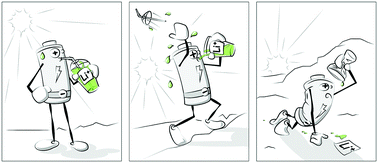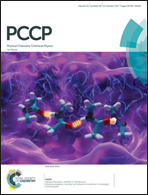Running out of lithium? A route to differentiate between capacity losses and active lithium losses in lithium-ion batteries†
Abstract
Active lithium loss (ALL) resulting in a capacity loss (QALL), which is caused by lithium consuming parasitic reactions like SEI formation, is a major reason for capacity fading and, thus, for a reduction of the usable energy density of lithium-ion batteries (LIBs). QALL is often equated with the accumulated irreversible capacity (QAIC). However, QAIC is also influenced by non-lithium consuming parasitic reactions, which do not reduce the active lithium content of the cell, but induce a parasitic current. In this work, a novel approach is proposed in order to differentiate between QAIC and QALL. The determination of QALL is based on the remaining active lithium content of a given cell, which can be determined by de-lithiation of the cathode with the help of the reference electrode of a three-electrode set-up. Lithium non-consuming parasitic reactions, which do not influence the active lithium content have no influence on this determination. In order to evaluate this novel approach, three different anode materials (graphite, carbon spheres and a silicon/graphite composite) were investigated. It is shown that during the first charge/discharge cycles QALL is described moderately well by QAIC. However, the difference between QAIC and QALL rises with increasing cycle number. With this approach, a differentiation between “simple” irreversible capacities and truly detrimental “active Li losses” is possible and, thus, Coulombic efficiency can be directly related to the remaining useable cell capacity for the first time. Overall, the exact determination of the remaining active lithium content of the cell is of great importance, because it allows a statement on whether the reduction in lithium content is crucial for capacity fading or whether the fading is related to other degradation mechanisms such as material or electrode failure.

- This article is part of the themed collection: 2017 PCCP HOT Articles


 Please wait while we load your content...
Please wait while we load your content...